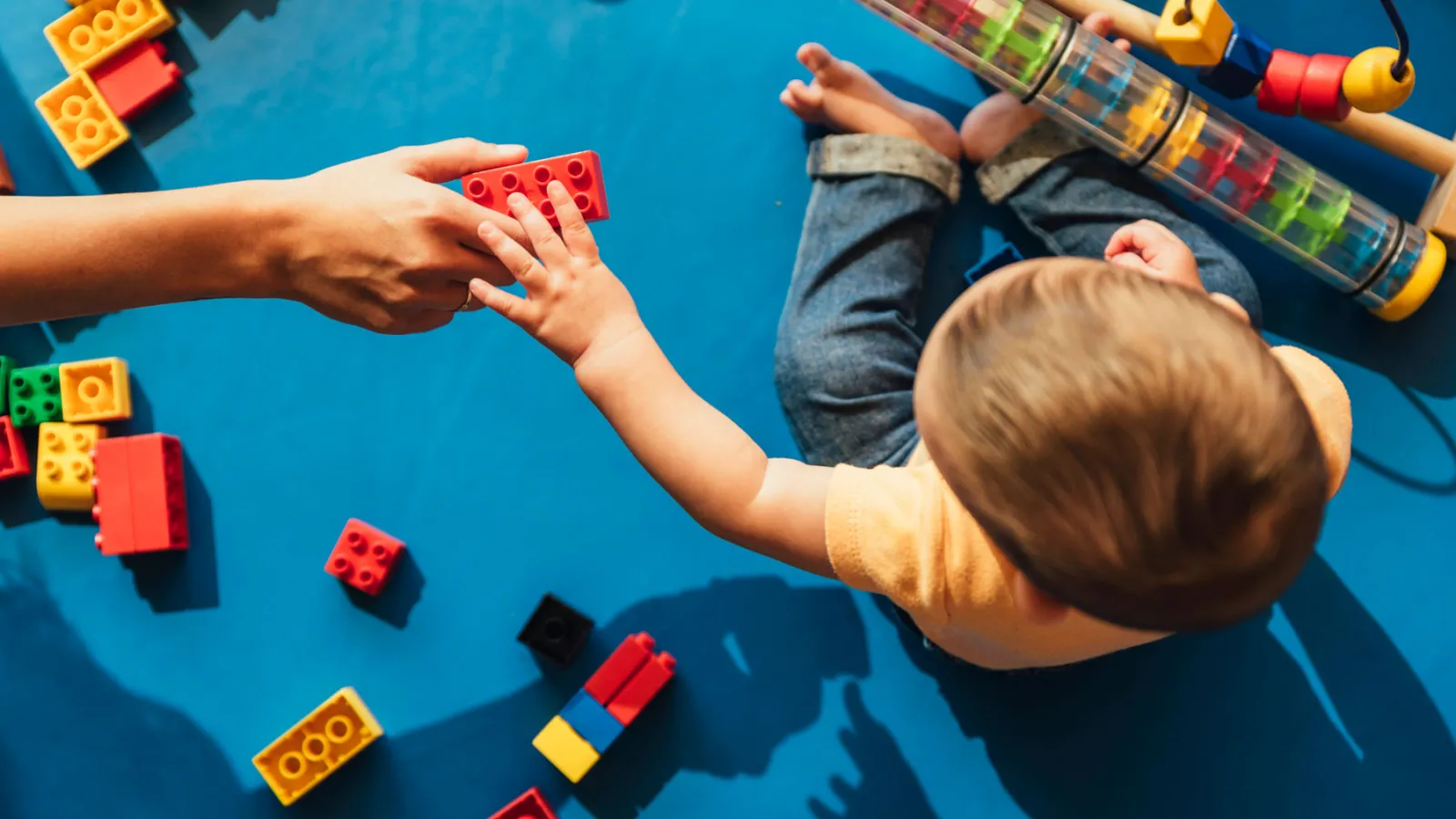Banner

Title
resources
Resource Library
Our Resource Library contains materials and assistance for early childhood educators and those they serve. Explore our selection of podcasts, tip sheets, websites, documents, and self-study courses.
Results: Page 14 of 23
| Resource Name | Description | Resource Type |
|---|---|---|
| Infant/Toddler Positive Behavior Support | These Teacher Time videos from the Head Start Early Childhood Learning & Knowledge Center focus on supporting Positive Behavior Support with infants, toddlers, and their families. | Website |
| Intensity--I Want Your Energy! | Intensity as a temperament trait is all about the amount of energy a child uses to express his emotions, and we know that some children cry, talk, and laugh more loudly than anyone else in the program! We want to honor this natural trait in children for the good things about high intensity while also giving children tools for impulse control and friendship skills. Join Priscilla and Cindy as they discuss children with high intensity and the energy they seek from others. | Podcast |
| Intro to Temperaments--How are Children Wired? | We will begin a series of podcasts on the major temperament traits that can relate to challenging behaviors at times. In the first podcast, Cindy Croft and Priscilla Weigel talk about how temperament traits impact each of us as adults including our perceptions and relationships. When we consider children, we need to realize that they also come to us with a unique blend of the 10 temperament traits that influence their interactions with others. The more we understand ourselves and the children we work with, the more likely we will be to avoid some of the challenges that come with the extremes of temperament. | Podcast |
| Ka Hortag Carruurta Inay Joojiyaan Dugsiga (Preventing Expulsion in Child Care) | Xeelado looga hortago ka joojinta iyo ka saarida carruurta leh dabeecadaha adag. Strategies to prevent suspension and expulsion of children with challenging behaviors. | Tipsheet |
| Making a Scripted Story for Early Childhood Education and Care Environments | "Scripted stories are a great tool to support a child who has difficulty in a routine or activity. Scripted stories can help a child understand what to expect during the activity or routine, understand the expectations and perspectives of others, and provide instructions about what to do." Here is a great resource from the National Center for Pyramid Model Innovations. | Document |
| Making Life Easier: Holidays: Strategies for Success | "While the holiday season is filled with enjoyable activities, events and traditions, it can also be a hectic and stressful time. Travel, shopping, loud music, bright lights, unfamiliar food, and busy schedules can turn typical routines upside down! The disruption to routine can be particularly difficult for children who depend on routine and predictability to engage in appropriate behavior." Check out this helpful resource from The National Center for Pyramid Model Innovations (NCPMI.) | Document |
| Meal Time--Magic or Mayhem: Part Three | In the conclusion of our series on daily activities in child care programs, we will talk about the benefits to children with and without disabilities that come from meal time. This is another area of the day when challenging behaviors can take our focus from what we are trying to accomplish like community-building, sharing, emotional regulation and other skills. What can you do when a child eats more slowly than their peers? What about a child who takes someone else’s food? Listen to this lively discussion of the important part of the day. | Podcast |
| Mindfulness Practices for Families | "When parents and children are feeling big emotions, it’s good to find some calm." Here are some simple mindfulness activities from Zero to Three. | Website |
| MN Autism Resource Portal | This website was created as a result of a joint state agency effort involving the Minnesota Department of Education (MDE), Department of Health (MDH), Department of Employment and Economic Development (DEED) and the Department of Human Services (DHS). The Institute on Community Integration (ICI) at the University of Minnesota-Twin Cities served as a key partner along with the Minnesota Department of Information Technology (MN.IT). The purpose of this website is to provide the Minnesota Autism community with up-to-date information and resources related to Autism Spectrum Disorder (ASD). It is the hope of all involved that this website will help the Minnesota Autism community connect, share and learn together. Content will be collected from a variety of sources, such as nonprofit organizations, state and federal agencies and other autism-related organizations. | Website |
| Model Me Kids | Model Me Kids® is dedicated to producing high quality teaching tools for children with Autism, Asperger Syndrome, PDD-NOS, and Nonverbal Learning Disorder. We strive to make our products affordable so that they are accessible to both families and educators. Designed as a teaching tool for children, adolescents, and teenagers with Autism, Aspergers, PDD-NOS, Nonverbal Learning Disorder (NVLD or NLD), and developmental delays, the videos are used by parents, teachers, and therapists. The videos are also helpful for teaching children with developmental disabilities such as Down Syndrome. | Website |
Results: Page 14 of 23